Volkswagen ID.4 Vs Toyota BZ4X Comparison

For years, both Volkswagen and Toyota fought for the title of largest automotive company in the world.
Yet, at least in North America, both brands have taken their time embracing all-electric models. That’s set to change over the next few years, and the ID.4 and bZ4X represent their respective automakers first moves into the EV space here. Both target the lucrative small SUV segment, but like the Tiguan and RAV4, they go about it in very different ways.
This head-to-head is a breakout comparison from our larger Best EV SUV feature, and once again brought to you by Weathertech. Let’s dive in and see how the Volkswagen ID.4 and Toyota bZ4X handle the daily grind.
Interior and Cargo Space
ID.4: Despite being shorter and slightly narrower in size, the ID.4 comfortably beats the Toyota in practically all measurements. It loses out on front legroom (41.1 inches / 1,045 millimeters), but has more out back (37.6 in / 954 mm). Headroom is a big win as well: at 41.1 and 38.4 inches (1,045 and 976 mm) it has multiple inches on the Toyota.
More than those on-paper figures, the VW simply feels airier. The big glass roof helps, which unlocks additional airspace over lesser models. And this blue and white cabin! It’s such a breath of fresh air after so many black or grayscale interiors. I find the seats more comfortable than the ones in the bZ4X as well, with an upright driving position that affords the driver great visibility. The backseat benefits from the glass roof as well, and has a raised cushion that makes it a more adult-friendly space to spend time. The leatherette surfaces are smooth and easily capable of convincing folks they're real former cow.
Cargo capacity is a useful 30.3 cubic feet (858 liters). Unlike some other EVs, the ID.4 does without a frunk.
bZ4X: We might call this the RAV4 of the EV world, but beyond the badge on the steering wheel, there’s little sense of Toyota’s best-seller in the cabin. This is a cool interior, very different from the rugged RAV4. The wheel has a sweet, small diameter, making it easy to set nice and low to see the deep-set instrument cluster above the rim. Without a doubt, this is my favorite feature of the car: it puts all the necessary information closer to where your focus is, eliminating the need for a head-up display and letting folks put the wheel low. It’s one of those “why didn’t they do this sooner” features.
The rest of the cabin is visually pleasing, too. The mid-level XLE—or top trim in Canada—skips out on bathing the cabin in leather, real or synthetic. There’s a bit of the latter around the seats, while their centers feater a hearty, basketweave-like cloth fabric. The same stuff covers the wraparound dashboard as well. A semi-floating center console gives the Busy Forks a comfortable, cockpit-like feel. Toyota’s designers have remixed the cloth texture for other parts of the cabin too, like the dash-mounted speaker covers, and the center console cubby lid for the wireless charger. The latter is nice in terms of dedication of space, but I’m never a fan of keeping a charging device in a closed space. There’s too much piano black in here, especially on the door panels, which makes the bZ4X feel a little cheap.
The seats themselves are fairly comfortable, but lack any sort of power adjustment, which feels very stingy at this price range. The rear bench is sat low, probably to maximise headroom, but it means minimal under thigh support for back-seat passengers. Weirdly, not only is the bZ less spacious than the smaller ID.4, it’s tighter than the RAV4. We thought EVs were meant to unlock more room. It’s the same story with the cargo hold which, at 25.8 cubic feet (731 L) is about 20-percent smaller than the ID.4’s.
Bottom Line: The VW’s cool, colorful cabin earns it the first point here. Not only does it look nicer, it’s more spacious.
Technology and Features
ID.4: VW loads up the ID.4 with a good amount of kit. You’ve got the usual stuff like dual-zone climate control, heated and ventilated front seats, heated rears, customizable ambient lighting, and a heated steering wheel. A unique feature is the thin LED bar lining the windshield base. It flashes colors depending on things like the driver assistance suite, as well as prompts for the “Hey ID” voice assistant.
There’s just one strange omission at this trim and price point: the lack of a 360-degree camera. However, the ID.4 is basically the only car at this price point that offers front massage seats, activated via seat-mounted controls. Swanky.
Yes, the ID.4's infotainment is confounding. Stick to the basics and it's fine: a little slow on loading, but acceptable. Wireless Apple CarPlay and Android Auto both help as well. Locking away common-use features like climate controls in menus is a pain, and the touch-sensitive sliders for temperature are almost worse—especially since they aren’t illuminated. But more frustrating than any of that? The window switches! It doesn’t save anybody time having to press a button to access the rear windows. Bad, bad VW.
The smaller screen mounted on the steering column deserves praise, however: bright, easy to read, and always easily in view.
bZ4X: The more affordable Toyota can’t match the VW’s feature list. It does get dual-zone climate control and heated front seats and steering wheel (options in the US, standard in Canada), but you’ll need to go to a loaded Limited for front ventilation or rear heated outboards. Same with a 360-degree camera. The afore-mentioned lack of power adjustment for even the driver’s seat is still a blemish.
At least the Toyota’s infotainment is the clear winner of this pairing. The large 12.3-inch screen runs the current Toyota Audio Multimedia system, which is super-simple to navigate and pairs up with Apple and Android phones without a hitch. Or wire. There are still some hiccups, namely no easy way to easily swap between phone menus and the native setup. Toyota’s reliance on subscription services for things like navigation is also unfortunate—but hey, that’s what your phone is for.
Again, the deep-set instrument cluster is a home run here. It's easy to read, both in its resolution and placement, and provides all the info you could need.
Only one of these EV SUVs has a rear wiper too, and it isn’t the Toyota.
Bottom Line: Again, the VW comes through with more features. At some level that’s to be expected given its inflated price. The Toyota’s lack of relatively basic features like power seats is disappointing, however.
Powertrain, Driving Feel, and Efficiency
ID.4: Both of these EV SUVs pack a dual-motor setup, with one motor on each axle. The Volkswagen is the comparative hot rod of the pair, pushing out 295 horsepower and 339 pound-feet of torque. It also has a larger battery pack, with the underfloor setup featuring a capacity of 82.0 kWh.
The dual-motor ID.4 doesn’t have the surge of acceleration you’ll find in something like a Kia EV6 or Mustang Mach-E, but it’s clearly the spritelier choice in this face-off. The VW has smooth acceleration, though its accelerator requires much more effort than the Toyota’s. Like its Japanese counterpart, the German EV eschews full one-pedal driving, though it does have more decelerative force when set to Boost. The steering is light and easy, making the VW feel fairly car-like.
The ID.4’s as-tested driving range is 255 miles (410 kilometers); models range from 209 to 275 miles (336–446 km). Official efficiency ratings are 104 and 91 mpg-equivalence city and highway, respectively. (Canadian figures: 2.3 and 2.5 Le / 100 km.) In our prime late-summer testing, we found the ID.4 easily capable of besting these figures.
Fast charging is the ID.4’s forte, with a peak rate of 170 kW.
bZ4X: There’s another RAV4 connection here, as the dual-motor has a combined output of 214 hp, and 248 lb-ft of torque. That puts it right around the RAV4 Hybrid, though this thing is hauling around an extra 700 lb. Most of that difference can be chalked up to the 72.8-kilowatt-hour battery pack. That’s the only battery capacity option in the Toyota, representing something of a middle ground between the base and optional sizes found in most of its competitors, the VW included. It’s comfortably lighter than the VW though: 4,464 versus 4,877 pounds (2,000 and 2,212 kg).
Nonetheless, the Busy Forks has less range than the ID.4. With AWD, the Toyota is rated to 222 miles, or 367 kilometers, on a single charge. If you’re road tripping, you’ll be stopping more often—and each stop will take longer, too, since the AWD model is capped at 100 kW on DC fast chargers. That’s in warm weather as well; Toyota has warned that DC fast charging speeds dip in sync with the mercury, and fast charging can disappear completely in freezing temps.
The bZ4X drives fine. There’s nothing wrong with how it handles daily duties, and it’s quieter than any RAV4, not to mention more comfortable. But there’s none of the premium feel you get in the ID.4, and certainly not the speed. Body roll is noticeable, though the steering is light and accurate. Braking performance is good, with a predictable pedal response. Regen braking is too light for my tastes even on the max setting, and there’s no one-pedal mode. The drive assists all work as prescribed, and the bZ4X thankfully skips Toyota’s intrusive Proactive Drive Assist.
The Toyota does have the advantage of X-Mode though. Borrowed from co-developer Subaru, this gives the bZ4X numerous drive modes to handle rougher terrain. Plus, with 8.1 inches of ground clearance, the bZ4X is better-suited to cottage trails than the road-oriented VW.
Bottom Line: The Toyota lags behind in terms of range, power, and charging. If the trip calls for adventure further off the tarmac, it’s the one we’d rather be in. But for everything else, it’s the VW.
Styling
ID.4: The ID.4 adopts a more streamlined, one-box shape than traditional SUVs like the Taos or Tiguan. If you were feeling particularly ungenerous you could make a minivan comparison, but I think it’s handsome and modern, and I really dig that strong shoulder line. The move to localized production in Chattanooga brought in a bunch of new colors, including this dark Tourmaline Blue hue. It’s easy to pick out der People’s Car on the road too, since it’s got a bright light-up badge at both ends. Neato.
bZ4X: You won’t mistake the Busy Forks for the RAV4, that’s for sure. While the BZ is close to the same size and has broadly similar proportions, its detailing is on a whole other level. It takes a more angular approach than the streamlined ID.4, with heaps of contrasting black bits, be it matte on the hood and lower bits, or glossy on those chunky arches. The split rear tailgate spoiler is a cool touch. There’s more than a passing resemblance to the Crown in the headlights, though. It’s very unique amongst the Toyota lineup, and unlike anything else on the road not called Solterra.
Bottom Line: Soft or sharp, it’s your call here.
Pricing and Value
ID.4: Pricing is dependent on which side of the border you live on. The US kicks off the line at a super-affordable $40,290 including destination, but this swanky tester rings up at $54k. In Canada, the ID.4 starts at $48k CAD, about a grand more than the Toyota, but the as-tested gap shrinks to just six thousand, as this is $63,995 CAD all in.
bZ4X: In the US, the Toyota starts at $43,350, notably higher than the VW. However, adding AWD is just $2,080, which makes it the cheaper all-paw option. As-tested, this XLE AWD undercuts the Volkswagen pretty substantially at $46,355. In Canada, the Toyota starts lower with a bargain-basement L trim ($46,920 CAD), while this tester goes for $57,175 CAD.
Bottom Line: The straight-numbers winner in this category, as tested, is the Toyota. You’re giving up a lot of features for that sticker though. Pricing is generally closer further down the lineup, where the more spacious—and with AWD, more powerful—Volkswagen is only slightly more money.
Verdict: 2023 Volkswagen ID.4 vs 2023 Toyota bZ4X
In the end, the Toyota’s added abilities off the beaten path aren’t enough for it to pass the Volkswagen. It’s cheaper, sure, but it’s comparatively poor value: you can go for a lower VW trim and still get more features, or max out the Toyota and still miss some there. This is the best bZ4X trim, but it can’t win this face-off.
That’s not to say the Volkswagen ID.4 is perfect, because it isn’t. The bizarre window and heating controls feel like an attempt at German humor. But look beyond those annoyances and the VW is comfortable, easy to drive, and feels more special. That it goes further, charges quicker, and is built right in the US are all bonuses that put it ahead here, and it wins this comparison.
Become an AutoGuide insider. Get the latest from the automotive world first by subscribing to our newsletter here.

Kyle began his automotive obsession before he even started school, courtesy of a remote control Porsche and various LEGO sets. He later studied advertising and graphic design at Humber College, which led him to writing about cars (both real and digital). He is now a proud member of the Automobile Journalists Association of Canada (AJAC), where he was the Journalist of the Year runner-up for 2021.
More by Kyle Patrick




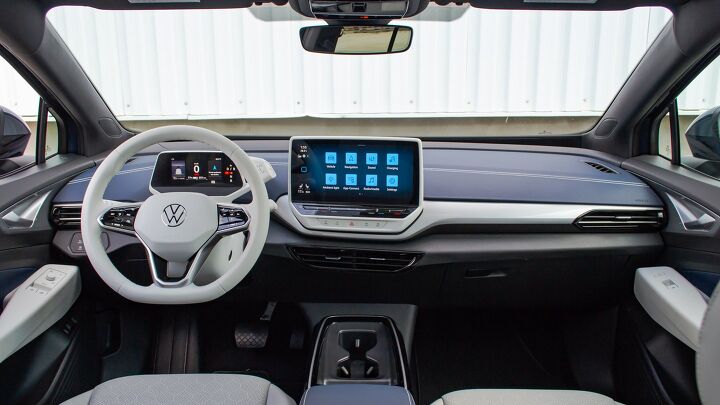

























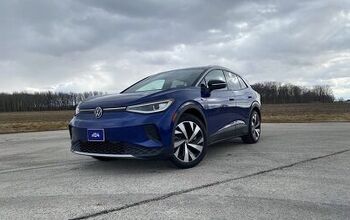
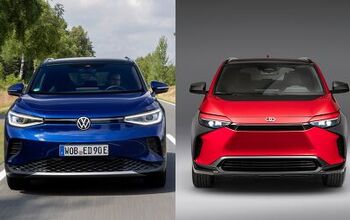
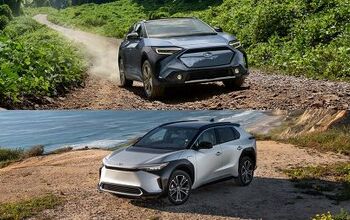




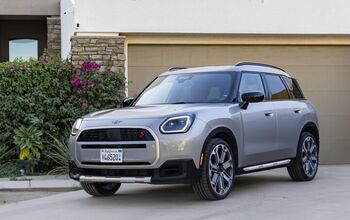
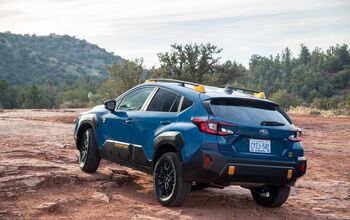


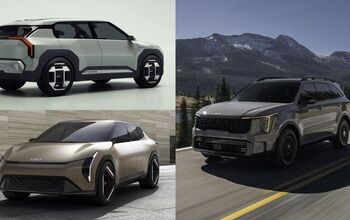
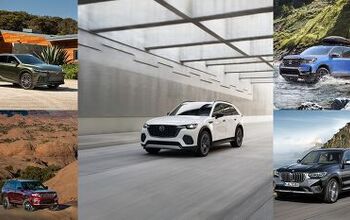

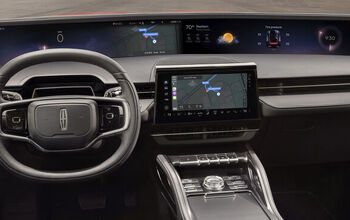
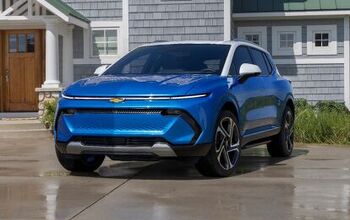

Comments
Join the conversation
All EVs are weird. They go whoosh instead of vroom.
At their current point of development, almost all EV's are no more than city cars and should be priced accordingly - like $20,000 to $25,000. All manufacturers are missing the opportunity to "grow the market". Trim the options and deliver base transportation. Henry Ford knew this in 1908, why can't any of our overpaid auto exec's figure it out?